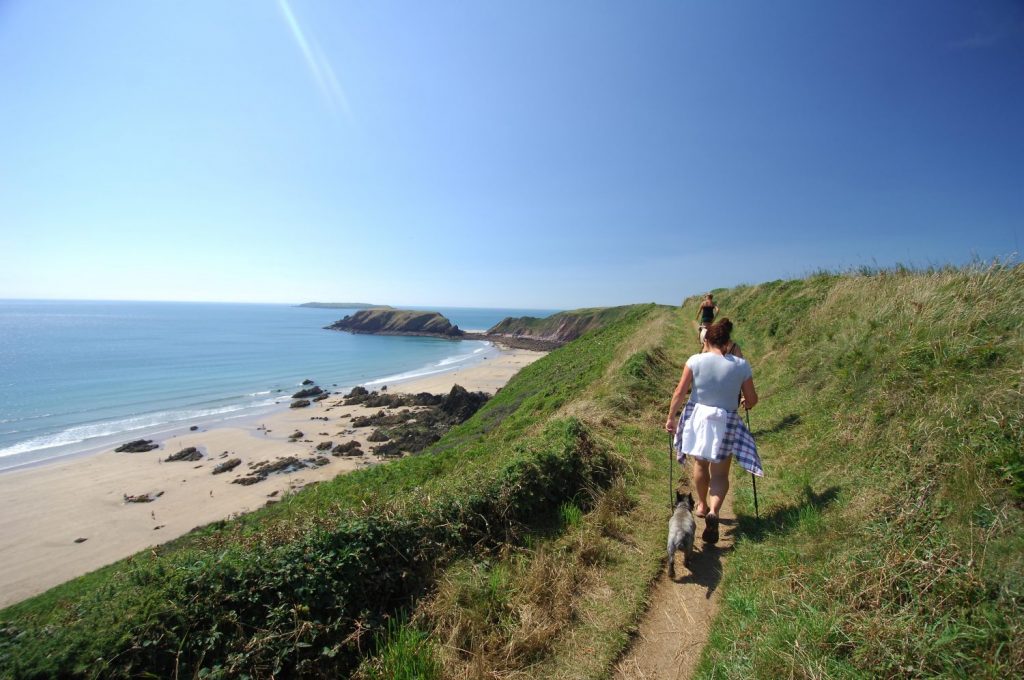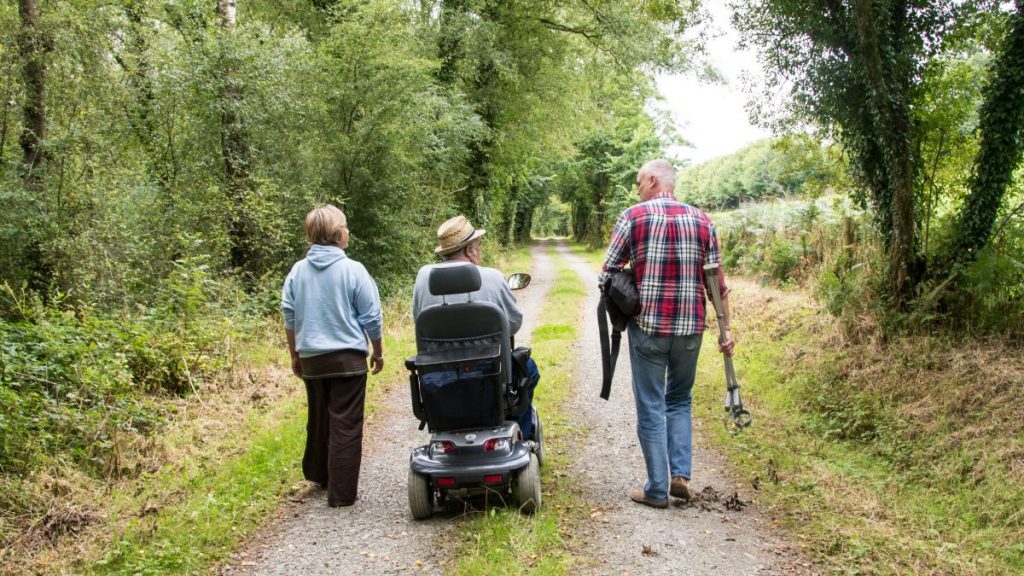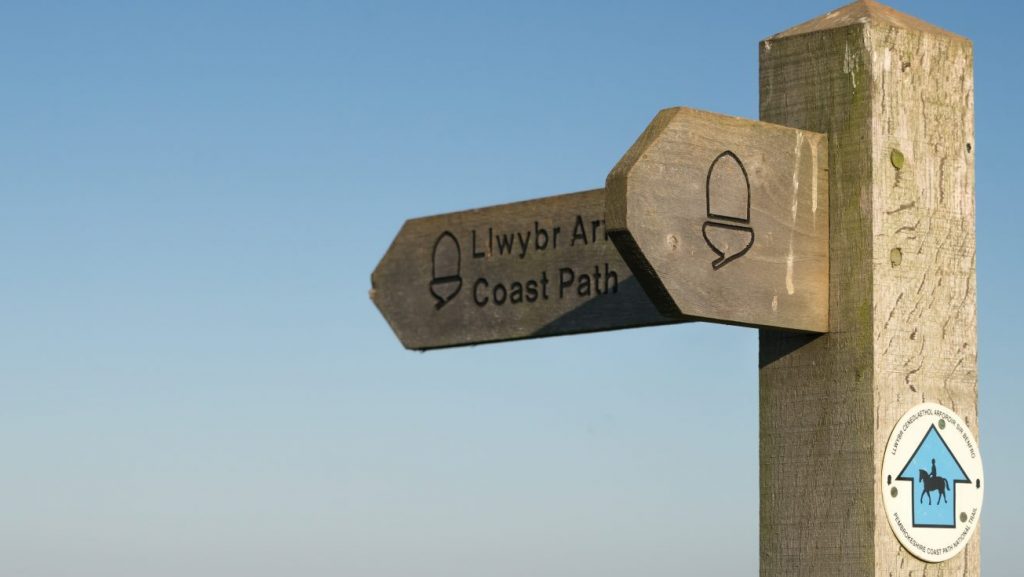DISTANCE/DURATION: 3.1 miles (4.9 km) 1 hour 30 minutes – one way.
PUBLIC TRANSPORT: Service bus Bosherston 387, Coastal Cruiser.
CHARACTER: Well defined track, reasonably level.
LOOK OUT FOR: St Govan’s Chapel, choughs and spectacular limestone cliffs/coastal scenery.
CAUTION: Path closed when firing range in use. Telephone 01646 662280 to confirm when path is open.
Dramatic limestone cliffs and a wealth of wildlife in green unspoilt surroundings.
Used by the Ministry of Defence as a firing range, since the 1940s, there has been relatively little human influence on this area of the south Pembroke Coast dominated by dramatic limestone cliffs.
This lack of disturbance has produced a rich, unspoilt range of habitats for wildlife (apparently the wildlife don’t mind the noise too much!
Stack Rocks (Elegug Stacks – elegug is the Welsh for guillemot) are two detached pillars of limestone. Also, look for the Green Bridge, a natural arch carved by the waves, and the Cauldron on the promontory to the east.
The tops of the Stacks and the ledges below are crammed in spring with guillemots and razorbills, and fulmar and kittiwake nest on the cliffs along with herring and blackbacked gulls.
In winter there are thrushes, crows and lapwings on the inland plateau. The rich grassland of the plateau is home to a range of reptiles, smaller mammals and invertebrates.
Rare butterflies like the dark green fritillary live here, too. St Govan’s Chapel, a 13th century single-chamber stone cell at the climax of the walk, can be reached by 52 rough stone steps (may be slippery).
The water from St Govan’s Well, below the chapel, was famous for its healing powers, though the well is dry now.
Libby Taylor, Senior National Park Ranger has done this walk. She says: “This walk crosses a remote, stark and windswept area – spectacular coastal scenery along the length of the coast, with stacks, arches, caves and blowholes. Great place to view wildlife at close hand during spring time, including razorbills, guillemots and the rare chough.”
Text provided by the BBC
Find this walk
Grid ref: SR925946
SAFETY FIRST!
- Take great care when on the Coast Path
- Stay on the path and away from cliff edges
- Wear boots and warm, waterproof clothing
- Take extra care in windy and/or wet conditions
- Always supervise children and dogs
- Leave gates and property as you find them



